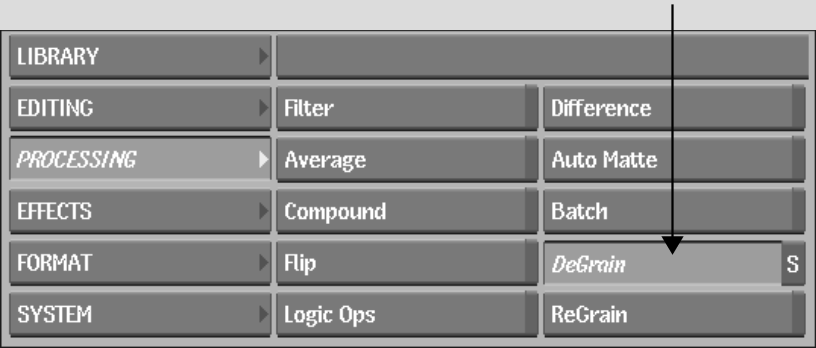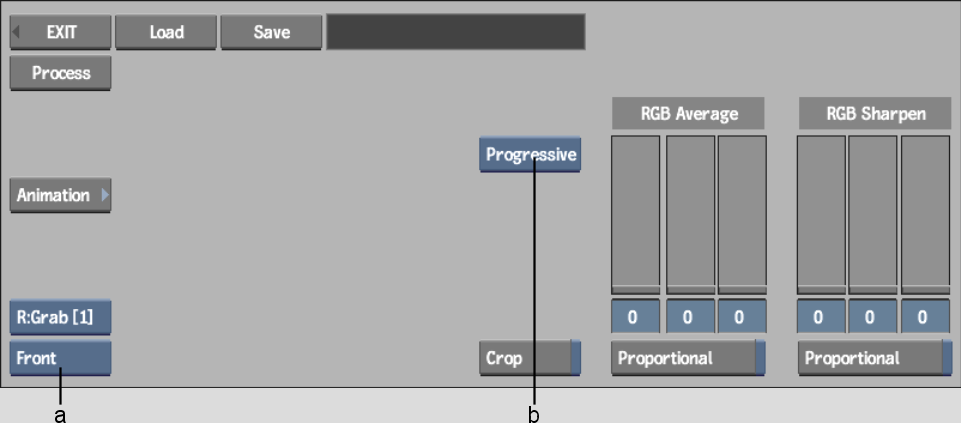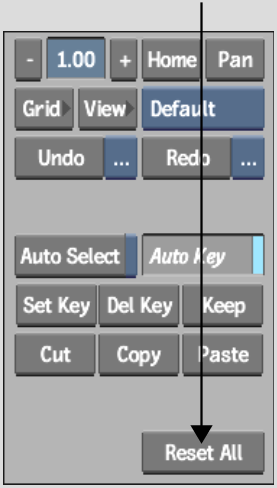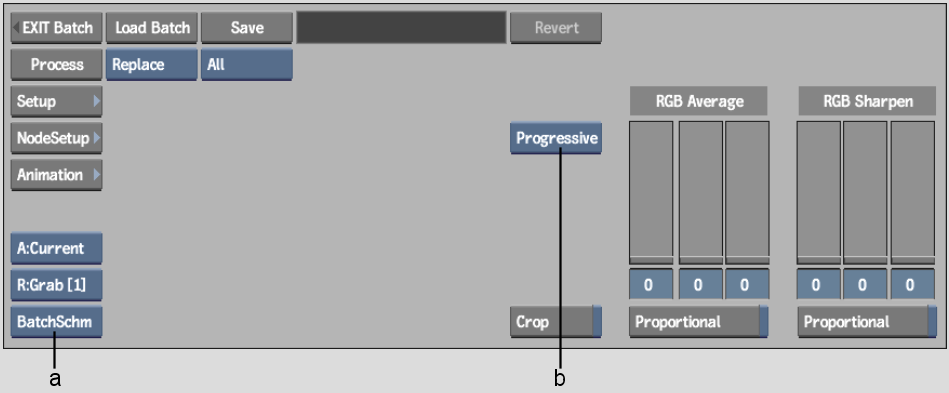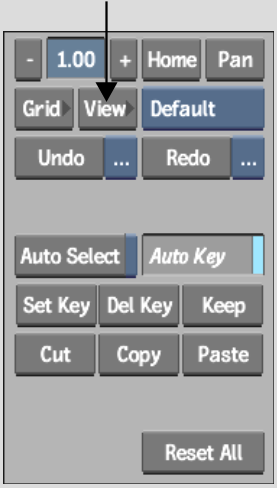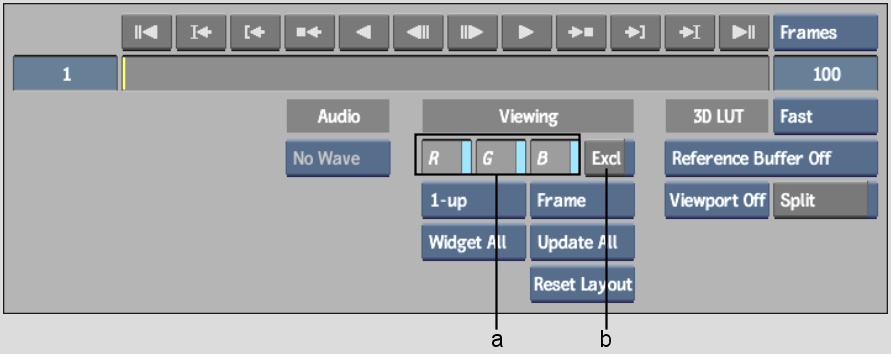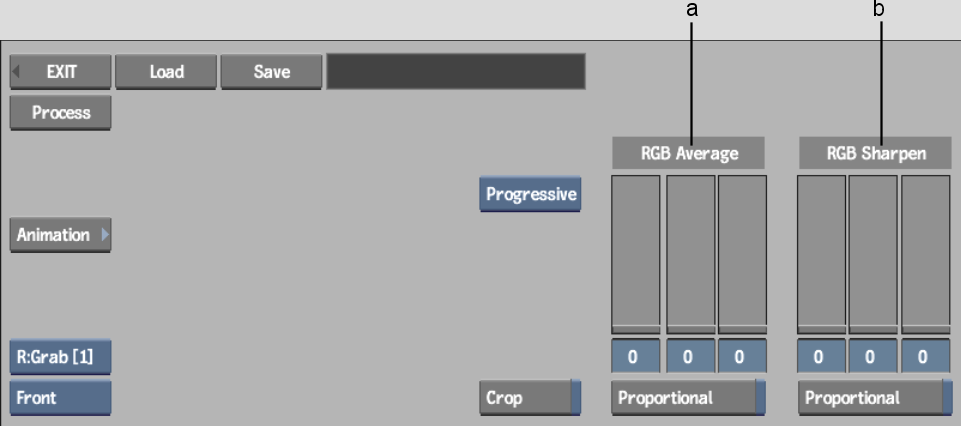Show in Contents

Add to Favorites

Home: Flint

About Film Grain

Adding and Removing Film Grain

Adding Grain to a Clip

Removing Grain from a Clip
Use the DeGrain command to remove grain from
a clip. DeGrain applies a noise reduction algorithm that consists
of two filters:
- An
RGB-averaging filter that removes noise and softens the image.
- An
RGB-sharpening filter that adaptively restores the sharp details
of an image.
When you remove grain from a clip, you start
with the default values for these filters and adjust them to produce
the degrained result that you need.
Because grain varies according to film stock,
lighting conditions, colour, and resolution, it is advisable to
create a DeGrain setup for each clip from which you want to remove
grain.
To
access DeGrain from the EditDesk:
- From the Main menu, click Processing, then
click DeGrain.
- Select
the clip from which you want to remove grain, and then select a destination
reel.
The DeGrain menu appears.
- Optional:
Click Reset All, and then Confirm, to reset DeGrain to the default
settings.
- By
default, the result clip appears. You can also view the front clip
by selecting Front from the View box.
- To
view the front and result clips simultaneously, and to speed up
interactivity while defining the DeGrain parameters, enable the
Crop button and use the crop box. See
Defining the DeGrain and ReGrain Area.
To
access DeGrain from Batch:
- Drag
a DeGrain node to the Batch desktop.
- Parent
the output from which you want to remove grain to the front clip input
socket of the DeGrain node.
- Select
the DeGrain node.
The DeGrain menu appears.
- Press Alt+2 to select the 2-Up viewport
layout.
With the viewport on the left set to display
the front clip and the viewport on the right set to display the
result clip, you can better track the effects of your changes against
the front clip.
- You
can also use the crop box to view the front and results clips simultaneously,
and to speed up interactivity. See
Defining the DeGrain and ReGrain Area.
- Use
the reference buffer to store intermediate results as you set the
grain removal parameters. See
Storing Reference Frames in the Reference Buffer.
To
remove grain from a clip:
- Select
an option from the Render Method box.
| Select: |
To: |
| Progressive |
Remove grain from frame-based material, including film-based
material transferred either to PAL without field interpolation,
or to 30 fps field-based formats, provided 2:3 sequence has been
removed.
|
| Interlaced |
Remove grain from field-based video, thus compensating
for temporal jitter between fields in each frame.
|
- Enable
View.
- In
the View menu, use the R, G, and B buttons to control the display
of the corresponding channels in the image window. You can also
use the corresponding hot keys (Shift+R, Shift+G, or Shift+B) in the DeGrain menu. Enable
Excl and then click R, G, or B to view each channel exclusively
as a greyscale representation. You can also use the Shift+X hot key combination in the
DeGrain menu to enable Excl. Use Shift+Z to
restore the RGB view.
- Set
the RGB Average Blur radius to remove the grain from the clip:
- Enable
Proportional and drag the sliders in the RGB Average group to average
RGB globally. This is usually a good initial step.
- Disable
Proportional and adjust the R, G, and B sliders independently. Because
film grain is not usually uniform through the R, G, and B channels,
this is often a required step for fine-tuning the RGB Average.
- Set
the RGB Adaptive Sharpness radius to restore sharpness where it
is needed:
- Enable
Proportional and drag the sliders in the RGB Sharpness group to set
RGB sharpness globally.
- Disable
Proportional and adjust the R, G, and B sliders independently.
- When
you are satisfied with the result, click Process to remove grain
from the clip or continue building
your processing pipeline, if you are in Batch.


